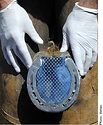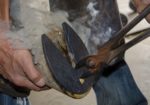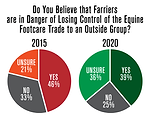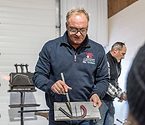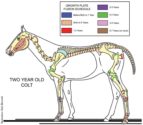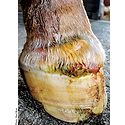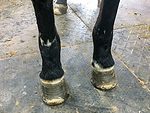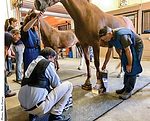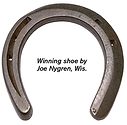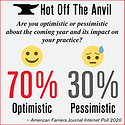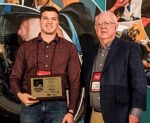Advertise Follow Us
American Farriers Journal
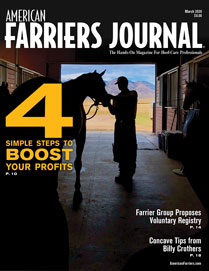
View Archived Issues
March 2020
Volume: 46
Edition: 2
American Farriers Journal is the “hands-on” magazine for professional farriers, equine veterinarians and horse care product and service buyers.
-
Table Of Contents
Table Of Contents
4 Steps to Grow Your Farrier Business
Florida farrier’s practice improves by changing prices, payment methods and shoeing cyclesRead MoreBritish Columbia Farriers Propose Voluntary Registry
Group aims to rewrite provincial law to gain control of its industryRead MoreHall of Famer Billy Crothers Shares His Approach to Building Concave Shoes
Repetition is key to master forging skillsRead MoreMaryland Farrier Remains Successful by Adapting His Practice
First Shoeing for a Living subject details keys for longevity in the face of uncertaintyRead More26 Tips from the 2020 Summit Roundtables
Farriers and veterinarians tap into collective wisdom at the International Hoof-Care Summit RoundtablesRead More7 Honored for Lifetime Hoof-Care Accomplishments
Four farriers and three veterinarians are inducted into the Hall of Fame at the International Hoof-Care SummitRead MoreEquine Reciprocating Systems: Periosteum, Joints and Growth
In the fifth in this series, Dr. Deb Bennett illustrates how the horse matures and the role joints play in locomotionRead MoreAbscesses Lead List of Common Hoof Infections
Dr. Raul Bras discusses foot infections at Midwest Equine Podiatry ConferenceRead MoreFarrier Discussion of High-Low Syndrome
Farriers share insight on high-low horses by looking at a case prior to trimming.Read MoreJoint Practitioner Educational Clinics: Win-Win for Clients and Their Horses
Case discussion builds camaraderie and helps reinforce professional boundariesRead More2020 Summit Mail-In Forging Winner
VICTORY sponsored the Summit Mail-In Forging Exercise, challenging participants to make a sidebone shoe.Read MoreCryotherapy’s Role in Helping Lame Horses
Researchers examine cryotherapy’s analgesic effects with study of horses with induced lamenessRead MoreRecognizing the Footcare Leaders of Tomorrow
Three farriers are honored at the International Hoof-Care Summit for outstanding career progress in their first 3 years after shoeing schoolRead MoreResearch Journal: March 2020
The information, ideas and opinions expressed are those of the author and do not necessarily represent those of the United States Department of Agriculture.Read More -
Featured Articles
Featured Articles
Hall of Famer Billy Crothers Shares His Approach to Building Concave Shoes
Repetition is key to master forging skillsRead MoreEquine Reciprocating Systems: Periosteum, Joints and Growth
In the fifth in this series, Dr. Deb Bennett illustrates how the horse matures and the role joints play in locomotionRead MoreAbscesses Lead List of Common Hoof Infections
Dr. Raul Bras discusses foot infections at Midwest Equine Podiatry ConferenceRead More - Digital Edition
-
Online Extras
Online Extras

